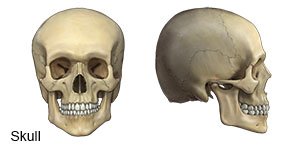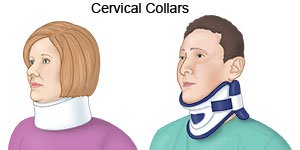Skull Fracture
Medically reviewed by Drugs.com. Last updated on Aug 4, 2025.
A skull fracture is a break in a bone in your head.
 |
WHILE YOU ARE HERE:
Informed consent
is a legal document that explains the tests, treatments, or procedures that you may need. Informed consent means you understand what will be done and can make decisions about what you want. You give your permission when you sign the consent form. You can have someone sign this form for you if you are not able to sign it. You have the right to understand your medical care in words you know. Before you sign the consent form, understand the risks and benefits of what will be done. Make sure all your questions are answered.
An IV
is a small tube placed in your vein that is used to give you medicine or liquids.
Medicines:
- Antibiotics prevent or fight a bacterial infection.
- Antinausea medicine may be given to calm your stomach and prevent vomiting.
- Sedatives are given to help you stay calm and relaxed.
- Steroids help decrease inflammation.
Related medications
Tests:
- An x-ray, a CT scan, or MRI may be used to check for broken bones and tissue swelling. You may be given contrast liquid to help damage show up in the pictures. Tell the healthcare provider if you have ever had an allergic reaction to contrast liquid. Do not enter the MRI room with any metal. Metal can cause serious injury. Tell the healthcare provider if you have any metal in or on your body.
- A nasal CSF test is done to check for a cerebral spinal fluid (CSF) leak caused by a skull fracture. A test strip is used to collect fluid from your nose. The strip will show if the fluid is CSF or normal nasal drainage.
- A cerebral arteriography, or cerebral angiogram, is done to take pictures of the blood vessels in your head.
- An ear exam may be done to check for bleeding or discharge from your ears. You may also need tests to check your hearing.
- An electroneurography is done to check for damage to your facial nerves.
- An electromyography (EMG) measures the electrical activity of your facial muscles. Your facial muscles are tested at rest and while you are using them. An EMG test may also check the nerves that control your facial muscles.
- A neurologic signs test is used to check your eyes, your memory, and how alert you are. Your hand grasp and balance may also be tested. This helps tell healthcare providers how your brain is working after an injury.
Treatment:
- A lumbar drain may be needed to decrease pressure in your head and brain. Increased pressure occurs when cerebral spinal fluid (CSF) builds up. CSF is the fluid around your brain. A tube is put into your lower back that will stay there for a period of time. The excess CSF fluid will drain out of the tube. The fluid may be sent to a lab for tests. These tests help check for problems such as infection or bleeding around your brain and spinal cord.
- A spinal tap is done to drain CSF fluid and decrease pressure in your head and brain. A needle is inserted into the lower area of your back. A small amount of CSF will be drained through the needle. Your healthcare provider may send your CSF to a lab for tests. You may need more than one spinal tap.
- A halo is a device used to keep you from moving your head and neck. Halos are often used if your skull fracture is not stable.
- Neck brace prevents you from moving your head and neck. A neck brace may be soft or hard and helps prevent more injury while your fracture heals.

- Surgery may be needed to fix your damaged skull bones or to remove pieces of bone. Pins, plates, or screws may be used to hold the bones together or to keep your spine stable. Injuries to your brain, nerves, or blood vessels may also be treated. If you have a wound, you may need surgery to remove damaged tissues and prevent infection.
Treatment options
The following list of medications are related to or used in the treatment of this condition.
Activity:
You may need to rest in bed with your head raised for a period of time after your injury. Avoid straining, such as blowing your nose or sneezing, to prevent increasing pressure in your skull. If fluid from around your brain is leaking, straining may worsen the leak.
RISKS:
You may have trouble controlling and moving your facial muscles. You may lose feeling in areas of your face. You may develop a life-threatening blood clot.
CARE AGREEMENT:
You have the right to help plan your care. Learn about your health condition and how it may be treated. Discuss treatment options with your healthcare providers to decide what care you want to receive. You always have the right to refuse treatment.© Copyright Merative 2025 Information is for End User's use only and may not be sold, redistributed or otherwise used for commercial purposes.
The above information is an educational aid only. It is not intended as medical advice for individual conditions or treatments. Talk to your doctor, nurse or pharmacist before following any medical regimen to see if it is safe and effective for you.
Learn more about Skull Fracture
Treatment options
- Medications for Head Injury
- Medications for Head Injury w/ Intracranial Hemorrhage and Loss of Consciousness
- Medications for Head Injury with Intracranial Hemorrhage
- Medications for Head Injury with Loss of Consciousness
Care guides
Symptoms and treatments
Further information
Always consult your healthcare provider to ensure the information displayed on this page applies to your personal circumstances.
